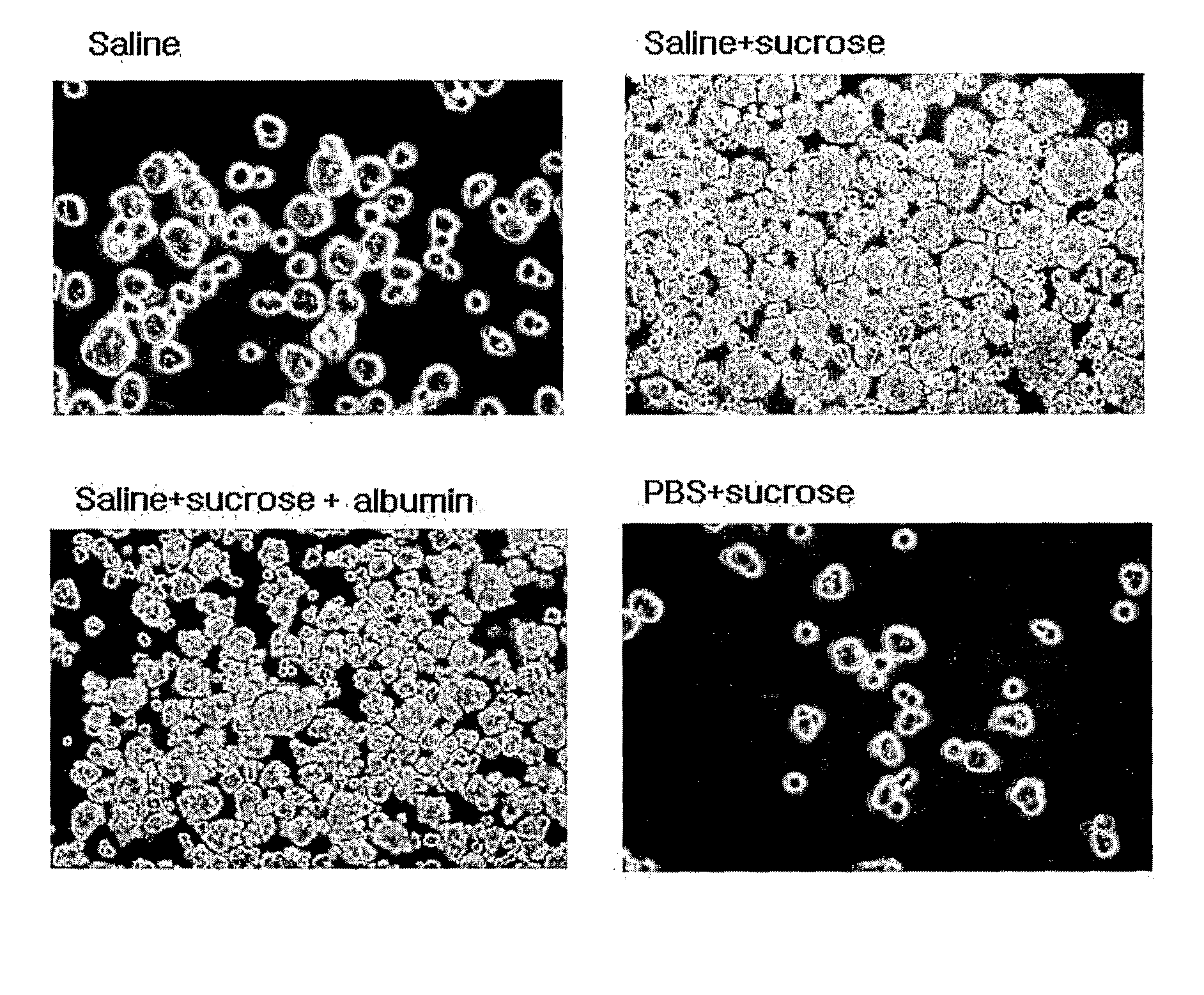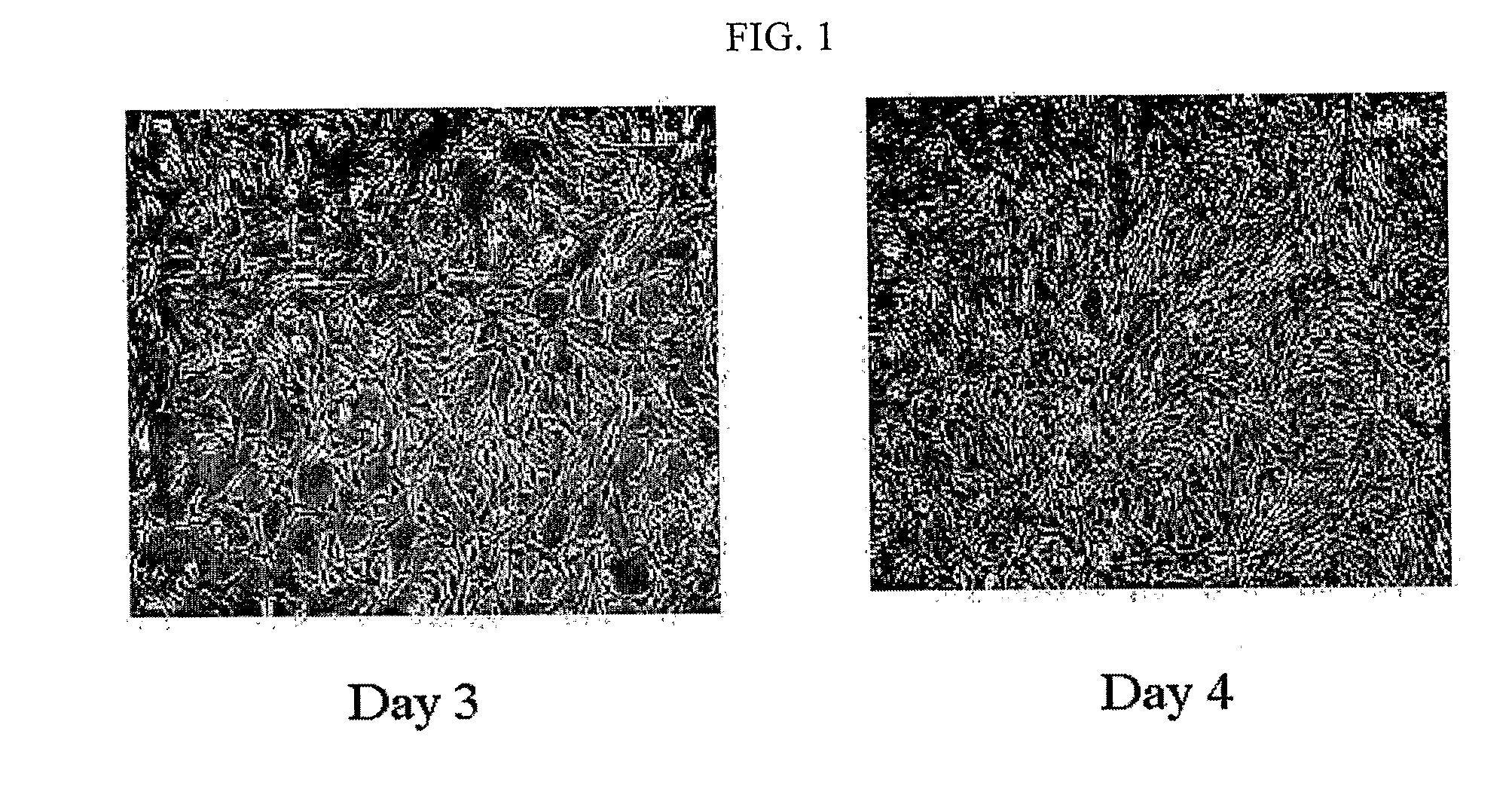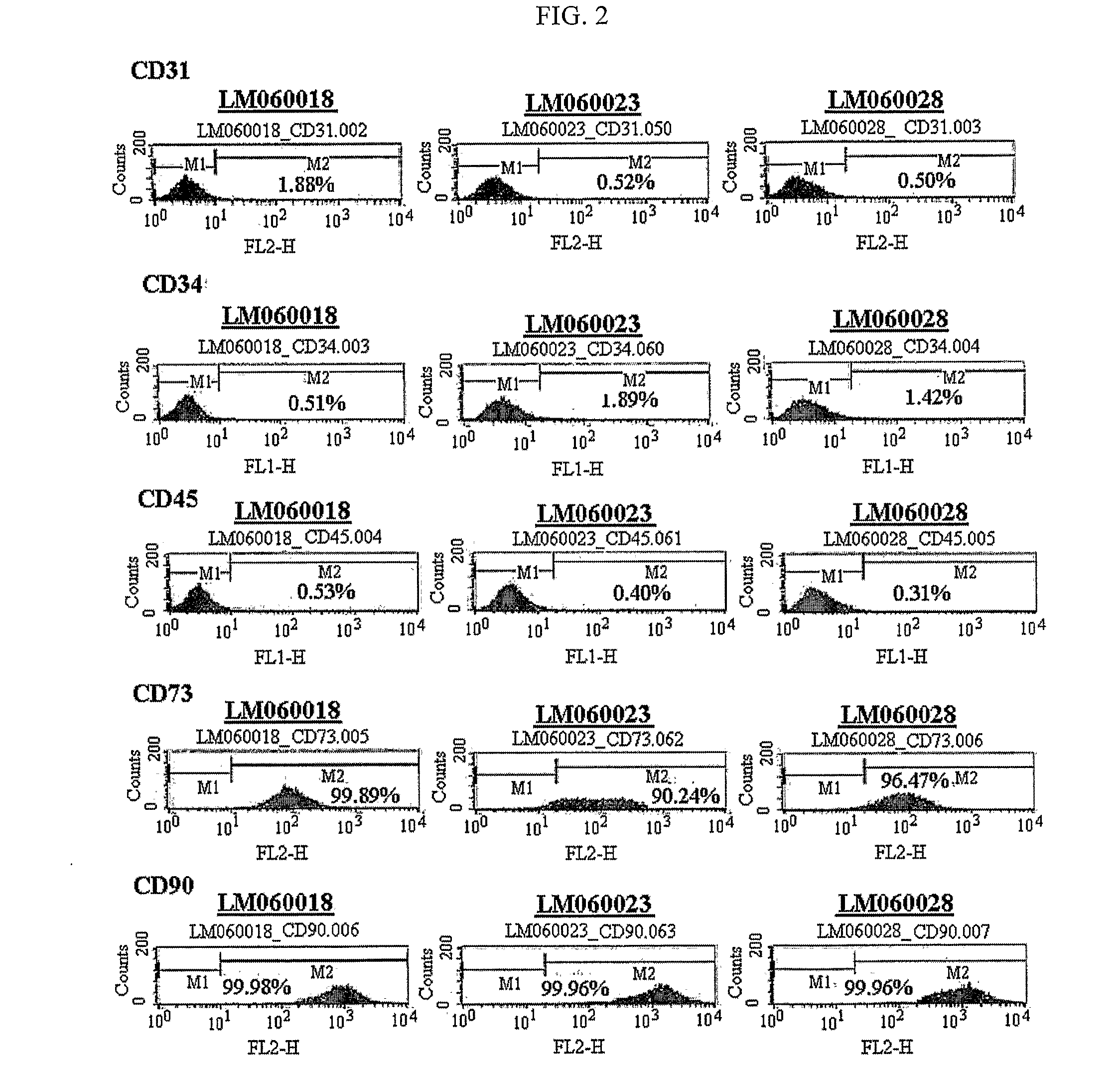Composition for treating ischemic limb disease comprising stem cells derived from adipose tissue
- Summary
- Abstract
- Description
- Claims
- Application Information
AI Technical Summary
Benefits of technology
Problems solved by technology
Method used
Image
Examples
example 1
Isolation of Multipotent Stem Cells from Adipose Tissue
[0050]Adipose tissue was obtained from abdominal liposuction, and washed with PBS and then finely cut. The cut tissue was digested in DMEM media supplemented with collagenase type 1 (1 mg / ml), at 37° C. for 2 hours. The digested tissue was washed with PBS and then centrifuged at 1000 rpm for 5 minutes. The supernatant was suctioned off, and the pellets remaining on the bottom were washed with PBS and then centrifuged at 1000 rpm for 5 minutes. The resulting pellets were filtered through a 100 μm mesh to remove debris, followed by washing with PBS. The resulting cells were incubated in a DMEM medium (10% FBS, 2 mM NAC, 0.2 mM ascorbic acid). After one overnight period, unattached cells were washed with PBS, and cultured in Keratinocyte-SFM media (containing 2 mM NAC, 0.2 mM ascorbic acid, 0.09 mM calcium, 5 ng / ml rEGF, 50 μg / ml BPE, 5 μg / ml insulin and 74 ng / ml hydrocortisone) while the media were replaced at two-day intervals, t...
example 2
Immunological Characteristics of Adipose-Derived Multipotent Stem Cells
[0052]The adipose tissue-derived multipotent stem cells obtained in Example 1 were washed with PBS and treated with trypsin. The treated cells were collected and centrifuged at 1000 rpm for 5 minutes. The supernatant was discarded and then washed with a mixture of 2% FBS and PBS, followed by centrifugation at 1000 rpm for 5 minutes. The supernatant was discarded, and the cells were suspended in PBS, and 1×105 cells for each sample were dispensed into a well plate. An antibody (R-phycoerythrin-conjugated mouse anti-human monoclonal antibody) was placed into each well and incubated on ice for 40 minutes. After the incubation, the medium was centrifuged at 1000 rpm for 5 minutes. The supernatant was removed and the cells were washed with PBS two times. After washing, the cells were fixed with 1% paraformaldehyde, thus analyzing surface antigens of multipotent stem cells using a flow cytometer (Table 1 and FIG. 2).
TA...
example 3
Formation of Human Adipose Tissue-Derived Miltupotent Stem Cell Spheres
[0054]Human adipose tissue-derived multipotent stem cells obtained in Example 1 were stored in conditions of saline, saline+sucrose, saline+sucrose+5% albumin and PBS+sucrose, and then examined for their sphere formation ability.
[0055]5×104-1×105 / ml of the human adipose tissue-derived multipotent stem cells obtained in Example 1 were seeded into each well of a 6-well plate containing a serum-free MEBM medium supplemented with 10 μM CORM-2, 5 ml antibiotic antimycotic solution (100×), 1 μg / ml hydrocortisone, 5 μg / ml insulin, 20 ng / ml EGF, 40 ng / ml FGF, B27 and β-mercaptoethanol. As a result, the cells started to form the shape of spheres from 3-7 days after the seeding, and as shown in FIG. 3, the cells proliferated to form spheres even at 7-10 days after the seeding.
PUM
| Property | Measurement | Unit |
|---|---|---|
| Composition | aaaaa | aaaaa |
| Concentration | aaaaa | aaaaa |
| Therapeutic | aaaaa | aaaaa |
Abstract
Description
Claims
Application Information
 Login to View More
Login to View More - R&D
- Intellectual Property
- Life Sciences
- Materials
- Tech Scout
- Unparalleled Data Quality
- Higher Quality Content
- 60% Fewer Hallucinations
Browse by: Latest US Patents, China's latest patents, Technical Efficacy Thesaurus, Application Domain, Technology Topic, Popular Technical Reports.
© 2025 PatSnap. All rights reserved.Legal|Privacy policy|Modern Slavery Act Transparency Statement|Sitemap|About US| Contact US: help@patsnap.com



